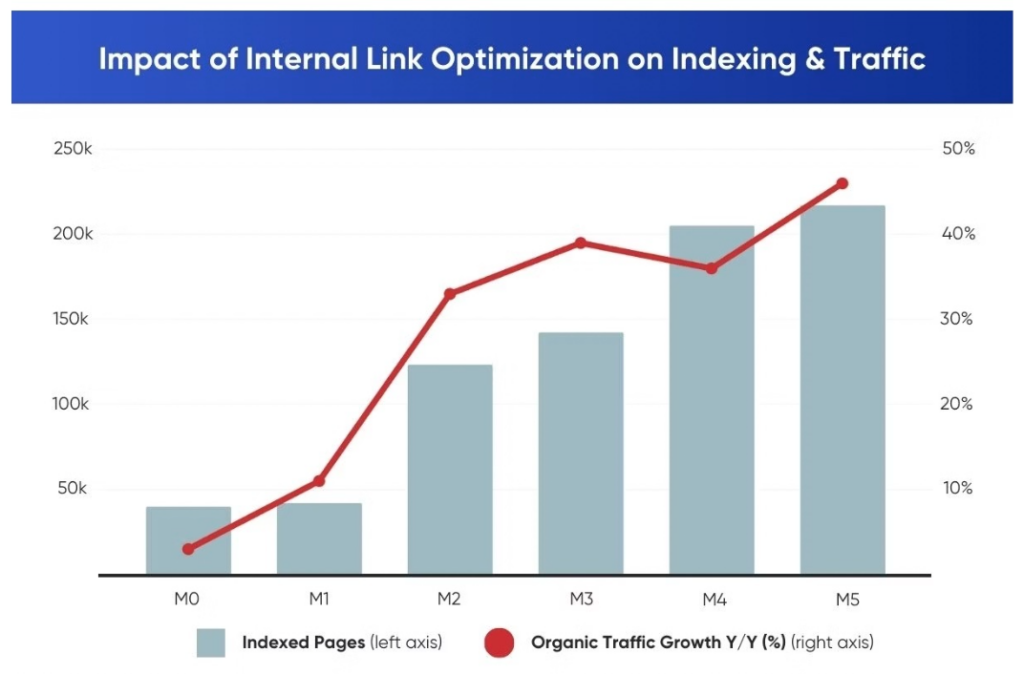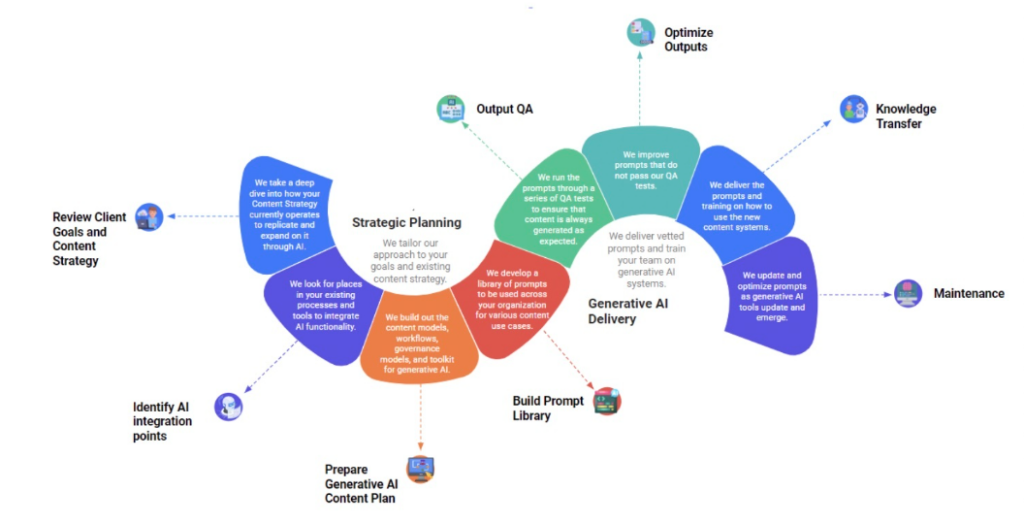Table of Contents
Hello, friends!
Did everyone have a spectacular Memorial Day weekend?! The crew at Uproer got up to a whole bunch of different activities. Cabins, soccer games, camping trips, and outdoors time were all a part of the itinerary.
May was an exciting month at Uproer, here are some of our favorite highlights:
- Jess Girardi presented at the monthly MNSearch event! Our team went to support her in person (see the photo below filled with Uproerians).
- We hired Maren Stibbe as a full-time SEO Analyst! We've appreciated having her aboard as an intern, and can't wait to witness the great work she'll continue to do at Uproer.
- John Smith finished his graduate program at the U of M Humphrey School of Public Affairs, congratulations!
We have some awesome articles this month. Keep scrolling to read Griffin’s case study on how an overlooked SEO tactic delivered 33% traffic growth for a SaaS client. Or, read up on how entity SEO and content stacking are paving the way for a new era of search strategies.
How an Overlooked SEO Tactic Delivered 33% Traffic Growth [SaaS Case Study]
By Griffin Roer, Uproer
Key Takeaways
- Internal linking is an often overlooked, but highly impactful SEO tactic. After executing internal link improvements, our client IFTTT’s indexed pages jumped from 42k to over 200k.
- Improving internal linking can be a challenging task. In many situations, it can be highly manual and resource-intensive. So, these opportunities get deprioritized.
- Making a strong business case for internal linking improvements is key. In this article, we walk you through a process to do just that.
Why it Matters
Despite how sophisticated search engines have become, they still depend on HTML links as the conduit for discovering, crawling and - ultimately - indexing web pages. With the explosion of JavaScript frameworks, like React, in web development, many companies have unknowingly de-optimized their websites for search engines by making internal links inaccessible to searchbots.
In our case study, we show you how to identify impactful internal linking opportunities AND make the case for getting them implemented. Enjoy!

Early Stage User Queries & Content Stacking
By Dan taylor, dantaylor.online
Key Takeaways
- Query stacking is the process of rapid searches following a path that leads you to a long-tail query. For example -> how to bake -> how to bake a cake -> how to bake flourless cake.
- Google is getting better at connecting the dots between searches. As search engines become more interactive and conversational (Thank you AI), query stacking will happen minutes, if not seconds apart.
- This has the potential to shorten the buyer's journey. As Google can serve more relevant results faster, a user will not need to spend as much time researching.
Why it Matters
As always, context matters. However, it is more important now than ever that all of the content that is being produced is clear and has a unique perspective. Clear headings and SEO-friendly formats will help your content be easily scanned and defined. If your content can’t be understood in a vacuum, then Google won’t be able to weave it into the customer journey.
Entity SEO: A Game-Changer in Search Engine Optimization
By Lawrence Hitches
Key Takeaways
- Entities are objects or concepts that can be uniquely and distinctly identified. This includes people (Michael Phelps), places (The United States), events (2008 Beijing Olympics), brands (Speedo), products (competition goggles) or even ideas (swimming). These entities allow search engines to connect information, leading to more relevant search results for users.
- In order for search engines to understand and connect entities with relevant information, websites need to leverage semantically-rich content. By focusing on topics, themes, and related entities within your content strategy, you can help search engines determine relevance, ultimately providing a pathway for increased organic traffic and encouraging higher user engagement.
- Implementing structured data markup is also essential for effective entity-based optimization. This helps search engines understand the entities mentioned on your site, which results in improved visibility on SERPs.
Why it Matters
We all know that the nature of SEO is constantly evolving, but have you heard about entity-based SEO? As search engines become smarter and more sophisticated, they are aiming to understand content in a more human-like way. By aligning your strategy with Entity SEO approaches, you not only help search engines recognize the value of your website, you can also get the upperhand in improving rankings and promoting an overall better user experience. You know what that means? More targeted (and qualified) organic traffic.
Generative AI Still Requires a Content Strategy
By Mike King, iPullRank
Key Takeaways
- Most companies are asking, “How can we implement AI within our content marketing efforts?” However, this is the wrong question to ask. Instead, they should be asking, “How can we build a content strategy for generative AI?”
- It’s true that generative AI can produce a ton of content very quickly. However, it can get out of hand fast, producing content that isn’t effective. Generative AI still needs a content strategy to ensure results.
- Some of the steps necessary to build an effective AI content strategy include understanding client goals, carefully identifying AI integration points, and preparing a prompt library for all use cases.
Why it Matters
Many marketers are working hard to implement and use AI tools for content development. However, iPullRank found that 49.5% of implementation is being done at the individual level—not as part of an overarching strategy. Unfortunately, any content developed without a strategy doesn’t yield the best results. To use generative AI effectively, you need a content strategy to ensure all content resonates with your audience, aligns with your brand messaging, and helps you reach your marketing goals.

Your New KPIs to Gauge Content Quality
By Amanda Natividad
Key Takeaways
- While the concept of "high-quality content" is subjective and difficult to measure, there are agreed-upon standards for determining quality in content marketing. Audience research, social monitoring, and staying updated on top-of-mind trends can help create content that resonates with the target audience.
- Traditional metrics like page views and keyword rankings are important but should be seen as means to an end. Alternative key performance indicators (KPIs) for measuring content quality include off-platform shares, quality of discussions generated, adoptions and copycats, meeting multiple stakeholder goals, inspiring new programs, and being economical with content efforts.
- While some KPIs are outside your control, such as off-platform shares and discussions, the latter three KPIs (adoption, meeting stakeholder goals, inspiring new programs) are within your control. By aligning content creation efforts with business goals and focusing on these controllable KPIs, you can build a successful content program.
Why it Matters
The article highlights the need to shift the focus from vague notions of "high-quality content" to measurable indicators of content effectiveness in the context of content marketing. By adopting alternative KPIs that capture audience engagement, influence, and business impact, marketers can better evaluate the success of their content efforts. This approach enables content creators to make data-informed decisions, improve content strategy, and align content with business goals, ultimately driving better results and demonstrating the value of content marketing.

